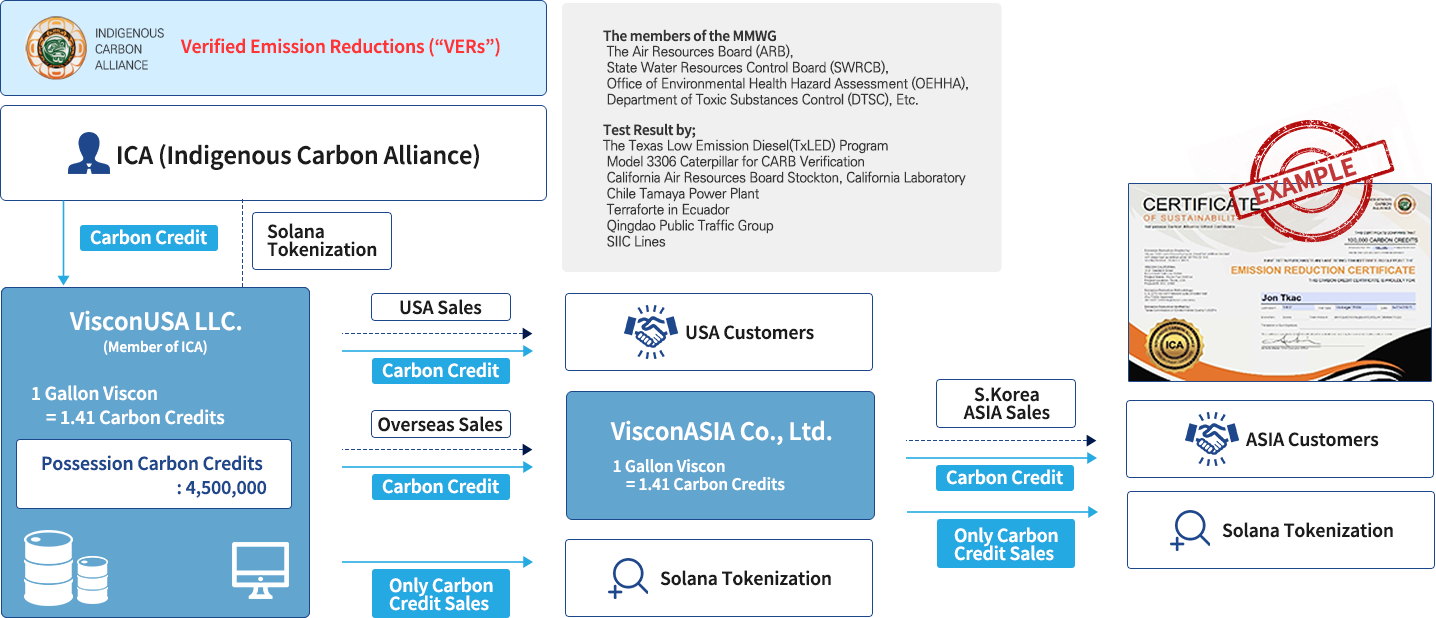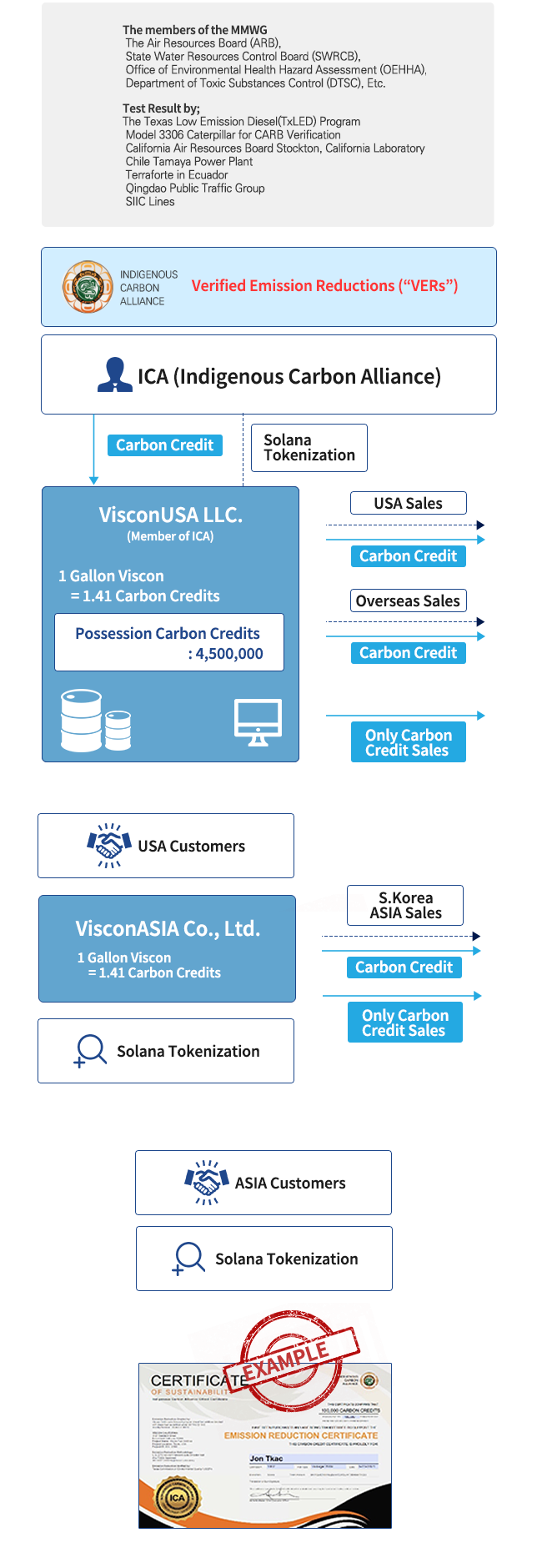About Carbon Credits
CARBON CREDITS
Converting CO2 To Energy
Capturing CO2 and improving thermal and volumetric efficiency reduces emissions that would otherwise exit the exhaust into the atmosphere. The quality of each carbon credit is determined by the standards and methodology of the project. High quality credits are the result of following stringent, scientifically proven governmental protocols for emissions testing.
Individual and Corporate social responsibility requires High Quality CO2 projects in their carbon footprint strategy. Viscon Carbon Credits exhibit permanent nonreversible Scope 3 CO2 emission reductions generated in the USA. The additional GHG emission reductions places these in the category of a Supper Offset Credit.
Calculated as CO2 savings generated
from the total amount of diesel treated with Viscon
Carbon Credits are calculated by multiplying total amount of Viscon treated gallons of
diesel by 22.4 (the scientific amount of CO2 emissions in lbs., produced by one gallon
of diesel combusted) to determine the pounds emitted from one gallon of diesel exhaust.
As Carbon Credit transactions are defined in metric tons, we simply divide the total by
2200 to achieve the tons of CO2 emitted from the volume of diesel treated. Then multiply
the percentage of reduction by 5.5% to the tons.
From that figure the amount of GHGs including CO2 that are generated by the
manufacturing of Viscon are determined in a Life Cycle Analysis. In this case .09% is
then subtracted from the 5.5% to give you a net reduction of 5.41% CO2. See formula
below.
Carbon Offset Credit Calculator
1 Carbon Credit = 1 metric ton of CO2 reduction
| Company | XYZ | ||
|---|---|---|---|
| Product | Diesel | ||
| Diesel Gallons Per Day | 3,200.00 | ||
| Total CO2 Emissions Produced lbs. | x22.4 | 71,680.00 | |
| Converted to Metric Tons | /2,200 | 32.58 | |
| Percentage of Reduction Minus the Life Cycle | |||
| Analysis for Viscon (5.41%) | X5.41% | 1.7625 | |
| Converted to Tons Per Year | Year x365 | 643.34 | |

